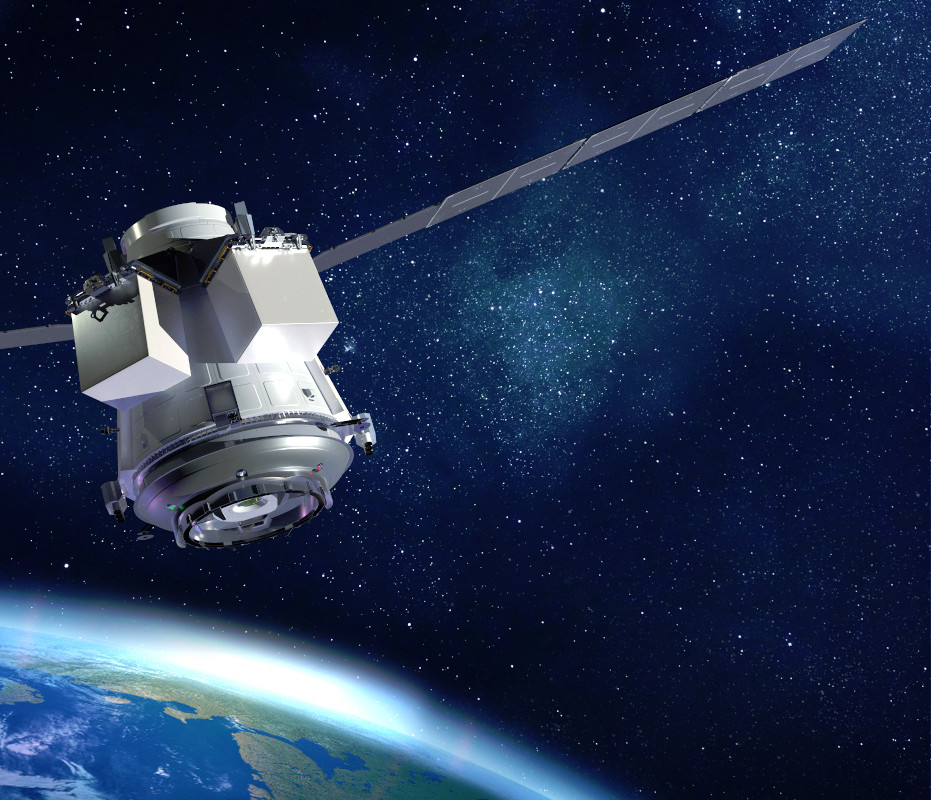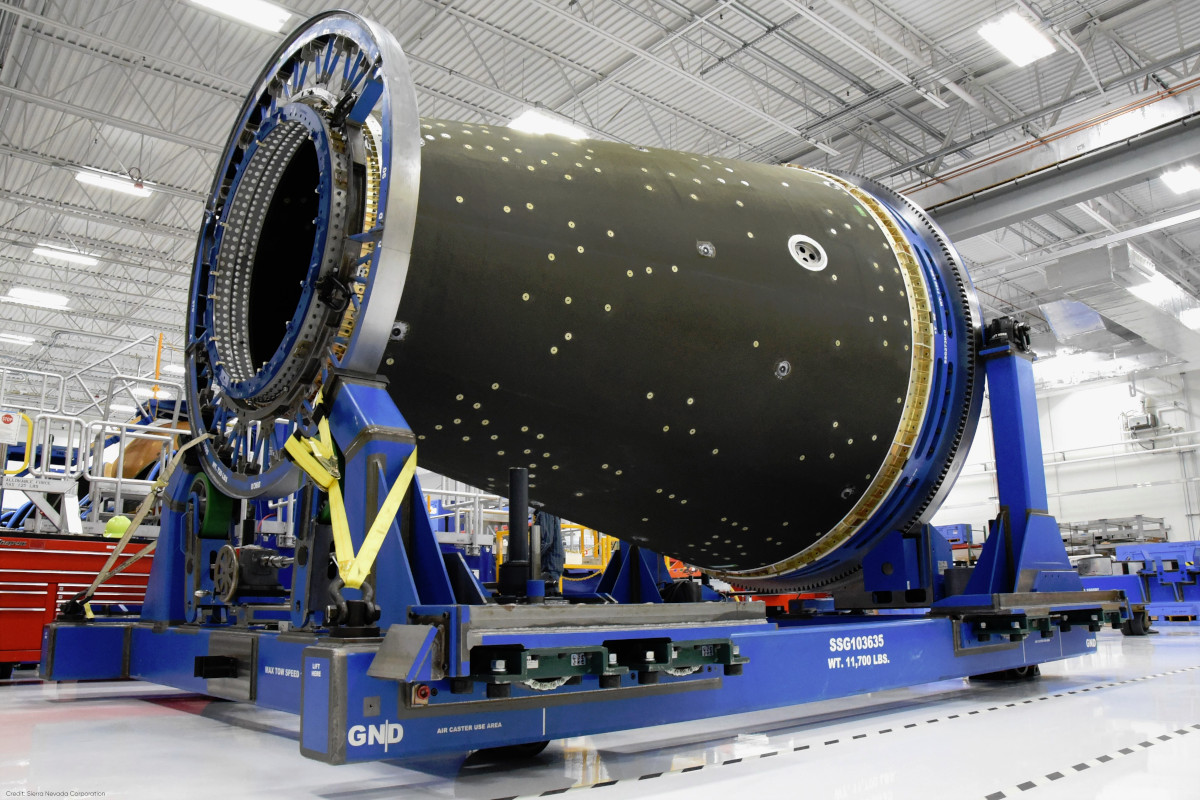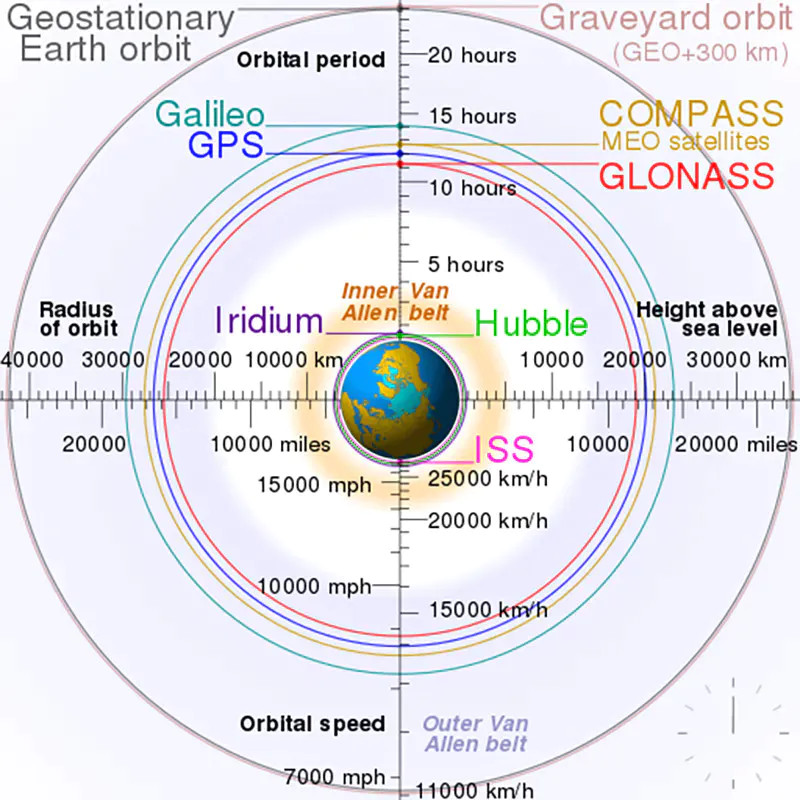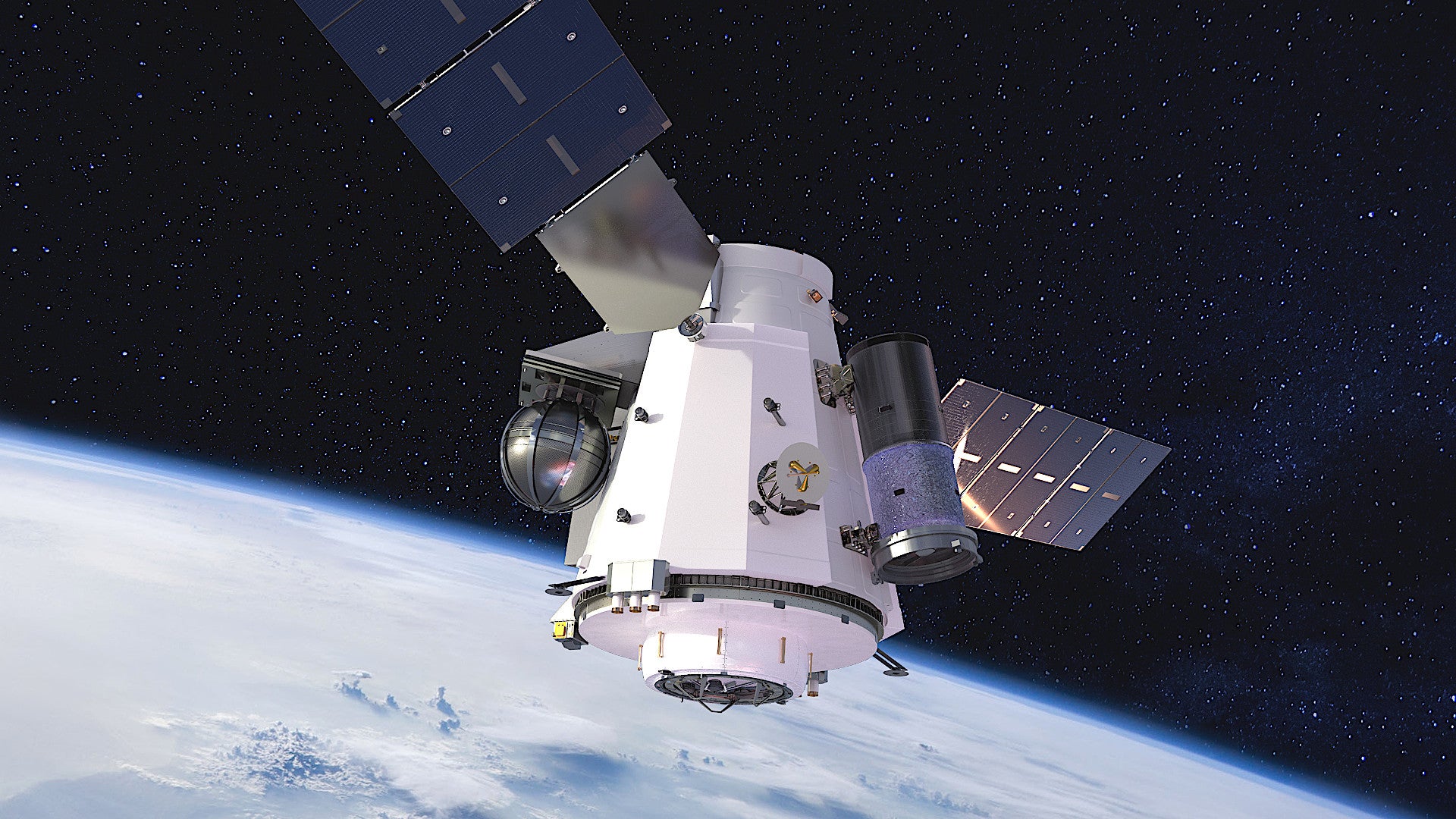The Sierra Nevada Corporation recently received a Pentagon contract to craft an experimental space outpost capable of supporting various research and development, training, and operational missions, including potentially with humans aboard. This comes as the U.S. military as a whole, including the nascent U.S. Space Force, is increasingly focused on operations in various orbits around the Earth, and competition there, as well as in cislunar space between our planet and the Moon.
On July 14, 2020, the Nevada-headquartered aerospace company announced the deal with the Defense Innovation Unit (DIU), but did not state the approximate value of the award. DIU is charged with “accelerating the adoption of leading commercial technology throughout the military” and has offices in California’s Silicon Valley, as well as Boston, Massachusetts and Austin, Texas, in addition to its headquarters in the Pentagon.
The Sierra Nevada Corporation (SNC) will now modify its Shooting Star space transport vehicle design as an Unmanned Orbital Outpost. The company has been developing Shooting Star since at least 2016 for NASA’s Commercial Resupply Services (CRS) program, which is seeking new means of delivering cargo to the International Space Station (ISS).
The existing 15-foot-long cargo vehicle is intended to be able to carry up 10,000 pounds of cargo, both inside in a pressurized compartment and in unpressurized packages attached to three external mounting points. The design has two solar panel arrays capable of generating six kilowatts of onboard power and is capable of maneuvering independently in space using six thrusters. SNC is hoping to conduct its first demonstration mission to the ISS using Shooting Star next year.

“We’re excited by the multi-mission nature of Shooting Star,” SNC’s CEO Fatih Ozmen said in a press release regarding the DIU contract. “It was originally developed for NASA resupply missions to the International Space Station, and since then we keep identifying new capabilities and solutions it offers to a wide variety of customers. The possible applications for Shooting Star are really endless.”
“The current Shooting Star is already designed with significant capabilities for an orbital outpost and by adding only a few components we are able to meet Department of Defense needs.” Steve Lindsey, Senior Vice President of strategy for SNC’s Space Systems business area, who is also a retired U.S. Air Force pilot and former NASA space shuttle commander, added. “We are proud to offer our transport vehicle to DoD as a free-flying destination for experimentation and testing, expanding beyond its current payload service capabilities for Dream Chaser cargo missions.”

DIU first announced it was interested in a “solution… for a self-contained and free-flying orbital outpost,” just over a year ago. The miniature space station could support “space assembly, microgravity experimentation, logistics and storage, manufacturing, training, test and evaluation, hosting payloads, and other functions,” it had said in a July 9, 2019, notice.
“Space assembly” and “manufacturing” refer to the potential future capability to assemble, as well service, satellites and other spacecraft in orbit, something the U.S. military, as well as NASA, has been exploring for some time. The outpost itself could serve as platform on which to test those capabilities. The Air Force has also publicly raised the possibility of using orbital platforms as logistics nodes, the feasibility of which The War Zone
“The proposed orbital outpost will be initially established in LEO with guidance, navigation and control for sustained free-flight operations to host payloads and support space assembly, microgravity, experimentation, logistics, manufacturing, training, test and evaluation,” SNC’s press release says, showing that DIU is still interested in an orbital platform that may be capable of performing these and the other previously stated mission sets. “Future outposts may be based in a variety of orbits including, medium-Earth orbit, highly elliptical orbit, geosynchronous Earth orbits (GEO) to include GEO transfer orbits, and cislunar orbits.”

Neither DIU’s original notice nor SNC’s press release mentions any specific payloads that could find their way onto the orbital platform. It could be an ideal space to test new space-based communications, data-sharing, or navigation systems.
The outpost could also potentially support sensor suites for intelligence, surveillance, or reconnaissance purposes or weapons, either defensive or offensive. It is worth noting that the 1967 Outer Space Treaty, to which the United States is party, bans the deployment of weapons of mass destruction (WMD) in outer space, but does not expressly prohibit arming satellites or other spacecraft with conventional weapons.
DIU had also said when it first publicly unveiled its orbital outpost plans last year that it was interested in proposals that could eventually have a “human-rating,” meaning they could support manned operations, or serve as a stepping stone to a larger and more robust military space station. It’s interesting to note that in the 1960s, the U.S. Air Force, together with the then-classified National Reconnaissance Office, explored the possibility of a Manned Orbiting Laboratory (MOL) for intelligence-gathering purposes. The name was part of a cover story that this miniature space station was purely for research and development use.

The Pentagon eventually canceled that program in favor of spy satellites without any MOLs ever reaching space. NASA ultimately launched America’s first space station, Skylab, in 1973. The U.S. military and NASA, of course, have very actively collaborated over the years on various aerospace projects, including the use of the Space Shuttle as an orbital platform for military purposes, including the deployment of classified payloads, on multiple occasions.
DIU’s decision to hire SNC to build a modified Shooting Star vehicle for this new orbital outpost program could have other implications, as well. The company plans to deploy the cargo-carrying version using an unmanned version of its Dream Chaser reusable spaceplane.
At present, during the demonstration flight next year, SNC expects an unmanned version of Dream Chaser to launch with the Shooting Star module attached using a traditional rocket booster. It will then bring the cargo to the ISS and return without the module attached, landing at the Shuttle Landing Facility at the Kennedy Space Center in Florida. Shooting Star is designed to be disposable, detaching from the ISS and then maneuvering to safely burn itself up in the atmosphere after getting unloaded.

The U.S. military is already separately exploring various options for rapidly launching satellites and other spacecraft, which follows decades of previous work on similar concepts, including the use of reusable spaceplanes. You can read more about these projects, past and present, in these past War Zone pieces.
Dream Chaser, which is also set to have a version capable of carrying actual people, could offer a way to rapidly deploy new payloads to the orbital outpost, or even new sections to expand its physical size, and bring them back down to Earth, as necessary. DIU described “modularity and scalability” as “favorable characteristics” in its initial notice last year. With this in mind, this orbital platform could serve a similar purpose, broadly, to the Air Force’s experimental X-37B mini space shuttle, but with even greater persistence in space.
Whatever this space outpost ends up doing, it could be in orbit in the next two years. DIU’s original contracting notice said that it hoped to have a prototype of the outpost in LEO within 24 months of awarding the contract. It’s unclear what service or services might be involved in actually launching and operating it once its up there, though Space Force would be the obvious the choice, even DIU or another office within the Pentagon continued to formally manage the program.
All told, SNC’s reworked Shooting Star vehicle turned orbital platform for the Pentagon could be an exciting stepping stone for the U.S. military’s future plans for operating in space.
Contact the author: Joe@thedrive.com
